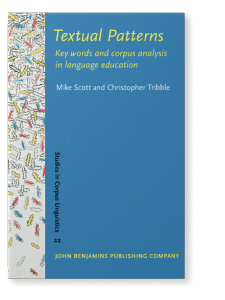Frequency is a key determinant of acquisition because “rules” of language, at all levels of analysis from phonological, through syntax to discourse, are structural regularities which emerge from learners’ lifetime analysis of the distributional characteristics of language input.
Category: quotations
Language is never, ever, ever random
“Language is never, ever, ever random” (Kilgarriff, 2005), not in its usage, not in its acquisition, and not in its processing. (Nick C. Ellis, 2017, p. 41)

Nick C. Ellis (2017). Cognition, Corpora, and Computing: Triangulating Research in Usage-Based Language Learning. Language Learning 67(S1), pp. 40–65
There are infinite ways of using language
Epistemological relativity, for an ELT professional, means that one accepts
that there are infinite ways of using language and that differences do not
automatically call for judgmental evaluation. (Leung, 2005: p. 138)
Leung, C. (2005). Convivial communication: Recontextualizing communicative competence. International Journal of Applied Linguistics, 15(2), 119-144.
Check other quotations here.
All adult linguistic categories are, ultimately, ideological constructs
[…] the very notion of “language” is a mere ideological invention. We agree that all adult linguistic categories are, ultimately, ideological constructs. However, we see inherent value in studying distinct languages and language varieties in bilingualism because of the fact that already in infancy, prior to any sociopolitical influences,
both bilingually and monolingually raised children can perceive, distinguish, and harbor strong attitudes toward different accents, regional varieties, and languages. Houwer & Ortega (2018: 3).
Houwer, A., & Ortega, L. (2018). Introduction: Learning, Using, and Unlearning More than One Language. In A. De Houwer & L. Ortega (Eds.), The Cambridge Handbook of Bilingualism (Cambridge Handbooks in Language and Linguistics, pp. 1-12). Cambridge University Press.
Check other quotations here.
Scott & Tribble (2006) on discovering pottential patterns
The second aspect is summarised in that phrase “potential patterns”. How so? The process operates in two stages. First, all the effort of a concordancer or a word-listing application goes into reducing a vast and complex object to a much simpler shape. That is, a set of 100 million words on a confusing wealth of topics in a variety of styles and produced by innumerable people for a lot of different reasons gets reduced to a mere list in alphabetical order. A rich chaos of language is reduced, it is “boiled down” to a simpler set. In the vapours that have steamed off are all the facts about who wrote the texts and what they meant.We have therefore lost a great deal in that process, and if it damaged the original texts we would never dare do it.
The advantage comes in the second stage where one examines the boiled down extract, the list of words, the concordance. It is here that something not far different from the sometimes-scorned “intuition” comes in. This is imagination. Insight. Human beings are unable to see shapes, lists, displays, or sets without insight, without seeing in them “patterns”. It seems to be a characteristic of the homo sapiens mind that it is often unable to see things “as they are” but imposes on them a tendency, a trend, a pattern. From the earliest times, the very stars in the sky have been perceived as belonging in “constellations”. This capability can come at a cost, of course: it may be easy to spot a pattern in a cloud or in a constellation and thereby build up a mistaken theory; but the point is that it is this ordinary imaginative capacity, that of seeing a pattern, which is there in all of us and which makes it possible for corpus-based methods to make a relatively large impact on language theory. For with these twin resources, namely the tools to manipulate a lot of data in many different ways and without wasting much time, combined with the power of imagination and pattern-recognition, it becomes possible to chase up patterns that seem to be there and come up with insights affecting linguistic theory itself. The tools we use generate patterns (lists, plots, colour arrangements) and it is when we see these that in some cases the pattern “jumps out” at us. In other cases we may need training to see the patterns but the endeavour is itself largely a search for pattern.

Scott, M. & Tribble, C. 2006. Textual Patterns: keyword and corpus analysis in language education. Amsterdam: Benjamins. (pp. 5-6).
Acquiring text varities
One of the most important goals of formal schooling is teaching text varieties that might not be acquired outside of school […] Early in school, children learn to read books of many different types, including fictional stories, historical accounts of past events, and descriptions of natural phenomena. These varieties rely on different linguistic structures and patterns, and students must learn how to recognize and interpret those differences. At the same time, students must learn how to produce some of these different varieties, for example writing a narrative essay on what they did during summer vacation versus a persuasive essay on whether the school cafeteria should sell candy. The amount of explicit instruction in different text varieties varies across teachers, schools, and countries, but even at a young age, students must somehow learn to control and interpret the language of different varieties, or they will not succeed at school.
Biber & Conrad (2009:3)
Biber, D., & Conrad, S. (2009). Register, genre, and style (Cambridge Textbooks in Linguistics).
Check other quotations here.